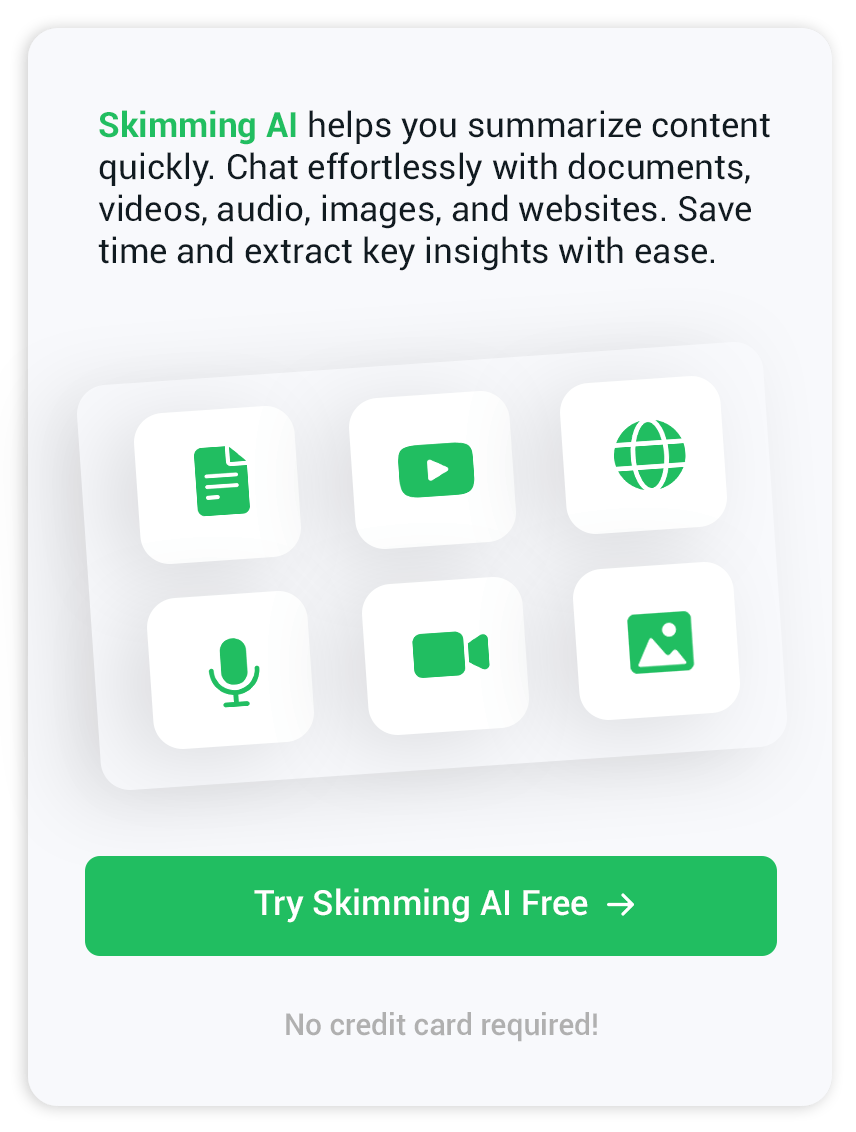Audio Summarizer Strategies for Effortless Listening and Note Taking
When podcasts, webinars, and long meetings crowd your schedule, the right audio summarizer brings back breathing room. By condensing spoken content into concise highlights, these tools free you from endless playback loops and allow you to focus on what matters most.
Why People Need an Audio Summarizer
Streaming talks on double speed or skimming timestamps work only up to a point. Listeners still sift through repetitive anecdotes, filler transitions, and digressions that stray from the topic. An audio summarizer pares that chatter down to the essential takeaways, making:
- Time savings are tangible, freeing entire hours each week for deeper work or relaxation.
- Accessibility is enhanced, converting dense speech into clear transcripts for readers with hearing loss or those who prefer reading.
- Retention is sharper because concise bullet points anchor memories better than sprawling monologues.
- Searchability instant, letting teams revisit key moments without scrubbing through waveform timelines.
Whether you are a student grabbing quick study notes, a manager preparing post-meeting action items, or a creator repurposing interviews for marketing copy, summarized audio unlocks sustained focus.
How an Audio Summarizer Works
Speech to Text Foundation
The process begins with automatic speech recognition. Sophisticated models map waveforms to words, handling background noise, accents, and domain jargon. Quality transcripts lay the groundwork for accurate summaries and smooth downstream editing.
Natural Language Condensing
Once text exists, summarization models refine it. Extractive approaches select pivotal sentences, while abstractive methods rewrite passages in plainer language. Advanced systems weigh word frequency, semantic salience, and discourse structure to decide what stays and what fades.
Essential Features to Compare
Accuracy and Language Support
Precision matters. Look for tools that deliver reliable word recognition across multiple dialects and niche terms, particularly if your audio spans technical subjects or multilingual panels.
Privacy and Security
Legal briefings, medical dictations, and strategy meetings contain sensitive data. Check for encryption in transit and at rest, regional data centers, and clear retention policies.
Integration in Your Workflow
A summarizer earns its keep when it syncs with existing platforms. Direct upload from cloud drives, native meeting bot recording, or API endpoints reduces friction and encourages widespread adoption.
Popular Audio Summarizer Tools Worth Trying
Skimming AI
Skimming.ai stands out with an intuitive interface that transforms lengthy audio or video into crisply written recaps in seconds. Its YouTube Summarizer feature, available at Skimming AI, doubles as an audio-to-text engine, pulling captions straight from public videos, live stream archives, or uploaded files. Users can choose between paragraph and bullet styles, adjust the summary length, and export results to project management boards or note-taking apps. Collaborative plans add role-based access controls, making it an appealing choice for teams sharing confidential meeting notes.
RecCloud
RecCloud approaches summarization as part of a broader creator toolkit. After uploading any MP3, WAV, or AAC file, users receive a full transcript, along with a highlight reel that automatically flags topic changes. Podcast hosts appreciate chapter suggestions that streamline editing, while marketers convert talk tracks into social snippets with timestamped quotes. RecCloud also supports multilingual transcription, enabling global teams to publish summaries in multiple languages side by side.
ScreenApp
Initially known for screen recording, ScreenApp’s audio summarizer now processes both local recordings and live virtual calls. Its AI engine identifies agenda items, decisions, and follow-ups and then pushes them to popular project boards. For educators, ScreenApp creates lesson overviews so students can revisit key ideas without having to replay hour-long lectures. Health professionals value the automatic redaction of personal identifiers, aligning summaries with compliance requirements.
NoteGPT
NoteGPT leans into study-friendly features. Upload an interview or lecture, and the platform not only summarizes the material but also generates flashcards, quizzes, and visual mind maps based on it. Learners tailor length—for instance, a fifty-word recap for quick revision or a five-hundred-word essay for deeper comprehension. Strong language detection distinguishes technical terms, ensuring concept fidelity across engineering, medicine, or law.
Azure AI
For developers who need summarization inside their products, Azure AI offers powerful APIs. Its conversation summarization endpoint handles channel-based meetings, recognizing speakers, and spotlighting tasks. Integration with Azure OpenAI lets teams fine-tune tone—for example, drafting executive briefs or concise meeting minutes—while scalable cloud infrastructure keeps latency low for global users.
Future of Audio Summaries
As large language models train on increasingly rich acoustic and textual datasets, expect summarizers that capture nuances like humor, sentiment, and intent. Real-time feedback during live events will surface action items before the meeting ends. At the same time, personalized summaries will match listener preferences, delivering bullet points for some and narrative prose for others. Ultimately, condensed audio becomes a shared knowledge layer, liberating human attention for creativity rather than transcription.
Finding the right audio summarizer is less about chasing hype and more about matching features to your daily flow. Pick a tool, test it on a favorite podcast or last week’s team call, and watch your listening list shrink while your insight list grows.


